Mustang, Golf, Genesis are Car of Year Finalists
Much like the college football season, the nation’s top automotive journalists have finished the “regular season” of evaluating the newest 2015 cars and truck/utility vehicles, and now the focus is on choosing the “national champions.” The Volkswagen Golf, Ford Mustang, and Hyundai Genesis are the three finalists for 2015 North American Car of the Year, selected after each of 57 jurors distributed 25 points among their choices.
The top three vote-getting vehicles for North American Truck/Utility of the Year are the Ford F-150, the Lincoln MKC, and the Chevrolet Colorado.
Having earlier voted to cut the field of all-new or thoroughly redesigned vehicles down to 10 or 12, jury members voted to determine the top three, with a maximum of 10 points allowed to one, and only one, in each category and all 25 points required to be distributed. That vote determined the top three, which were revealed December 8 in Detroit.
After a mad scramble to drive and evaluate all the cars on the original and shortened lists, the jury members (including this writer) next reevaluate the three finalists in both categories, then distribute 10 points, which are compiled to determine both the 2015 North American Car of the Year and the North American Truck/Utility of the Year. The winners will be named at the Detroit International Auto Show on January 12, preceding the show’s first media preview day.
Ford Motor Company, with the Mustang and the F-150 and MKC, stands as the only one with a chance to duplicate the 2014 sweep by Chevrolet, which won both awards with the Chevrolet Corvette and the Chevrolet Silverado. Ford’s Mustang has been completely redesigned, adding independent rear suspension, and offering a new EcoBoost 2.3-liter 4-cylinder engine to join the 5.0 V8 and the 3.7-liter V6 and the 5.0-liter V8. Prices range from $25,000-$50,000, with all three engines delivering over 300 horsepower in the rear-drive coupe.
Volkswagen’s seventh-generation Golf retains its familiar boxy shape, but has several significant upgrades to its front-wheel-drive package in a variety of models that cover the compact segment as well as its price range ($20,000-$35,000). VW’s impressive new 1.8-liter turbocharged 4 replaces the boring and unloved 5-cylinder with more power and better fuel economy. Included in the Golf family is the TDI — turbo-diesel — which is a newly revised version of the already world-class 2.0-liter 4-cylinder diesel and can approach 50 miles per gallon. On top of those models is the GTI, a sporty version with the 2.0-liter turbo gas engine that has sportier suspension, wheels, tires, seats and interior appointments.
The Genesis won the award when it was first introduced as the first mid-luxury model from South Korea’s Hyundai. The new-generation Genesis is improved in every way, from the flowing design with a much more distinctive grille, to the choice of direct-injected 5.0-liter V8 and in-house 8-speed transmission or a 3.8-liter V6, which adds the availability of all-wheel drive to its front-engine/rear-drive siblings. Hyundai chassis engineers consulted with Lotus to improve steering and handlng from dull to sporty. While the Genesis competes with far costlier German sports/luxury sedans at prices from $35,000-$50,000, one of its biggest challenges to become a finalist came from its sibling, the inexpensive and similarly redesigned Sonata.
The car finalists represent the U.S., Germany and Korea, all parts of the globe, and left behind a highly competitive group that included the Honda Fit subcompact, the Acura TLX, Audi A3, Chrysler 200, Mercedes C-Class, and Toyota Camry, as well as the Sonata — all of which were entirely new or technically redone.
Meanwhile, the truck/utility finalists are all from the U.S., as voters lifted the F-150, MKC, and Colorado above the field of mostly SUVs and compact CUVs (crossover utility vehicles). Left behind were candidates such as the all-new Audi Q3, Mercedes GLA, Lexus NX, and Porsche Macan, plus redone models of the Subaru Outback, Nissan Murano, Toyota Highlander, and two domestics — the Chevrolet Tahoe and the GMC Canyon.
The Ford F-150 has been the early favorite, because its technical breakthroughs include a high-grade aluminum frame and body, replacing considerable amounts of steel with lighter aluminum in chassis beams and body panels, and upgraded engines that add an all-new 2.7-liter EcoBoost V6 to the 3.5 EcoBoost V6 and normally-aspirated 5.0 V8. Significant weight reduction promises improved fuel economy.Base models start at about $25,000 and various models with numerous packages and options can about double that sticker.
Lincoln MKC is evidence of what Lincoln can do with a basic compact utility vehicle, such as the Escape, by adding all sorts of features and luxury upgrades. The big feature under the hood is the same 2.3-liter EcoBoost 4 that is so impressive in the Mustang, above and beyond the basic 2.0 EcoBoost, with the MKC’s front-wheel drive or all-wheel drive admirably. Priced from the mid-$30,000 range to over $40,000 with a lengthy option list.
The Chevrolet Colorado is a new half of GM’s midsize twins, joining the GMC Canyon, with only interior and trim feature differences. With extended or crew-cab bodies, the Colorado is big enough for most truck jobs but significantly smaller than the Silverado. A 3.6-liter V6 is an upgrade to the basic 2.5-liter 4, and gives the rear- or 4-wheel drive Canyon plenty of power. Curiously, the Colorado switches from 2wd to 4wd low or 4wd high, while the Canyon has those three choices, plus a 4-auto notch that is AutoTrac electronic control, engaging 4wd when needed. Price ranges from a low near $20,000 to $30,000 for fully equipped 4wd.
Except for the MKC, the jurors ignored compact utility vehicles, the hottest trend in automotives. The Lexus NX, Audi Q3, Mercedes GLA and the Porsche Macan are new entries, while the Tahoe, Murano and Highlander are redesigned. The GLA and Q3 are both compact, and offer turbocharged 2.0-liter 4 cylinders with good power and either front- or all-wheel drive for prices under $40,000. The competition among trucks was almost as intense as on the car side, and decisions were difficult.
But the results speak for themselves. The regular season is over, and the championship playoffs are poised to commence.


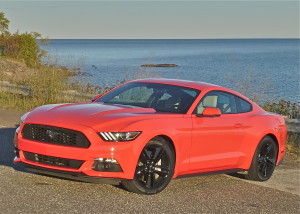
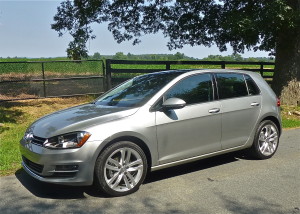
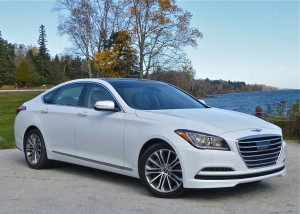
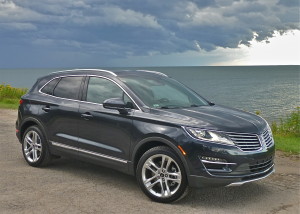
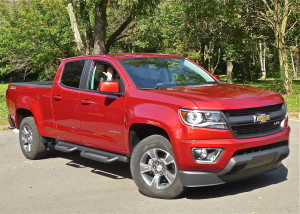
 John Gilbert is a lifetime Minnesotan and career journalist, specializing in cars and sports during and since spending 30 years at the Minneapolis Tribune, now the Star Tribune. More recently, he has continued translating the high-tech world of autos and sharing his passionate insights as a freelance writer/photographer/broadcaster. A member of the prestigious North American Car and Truck of the Year jury since 1993. John can be heard Monday-Friday from 9-11am on 610 KDAL(www.kdal610.com) on the "John Gilbert Show," and writes a column in the Duluth Reader.
John Gilbert is a lifetime Minnesotan and career journalist, specializing in cars and sports during and since spending 30 years at the Minneapolis Tribune, now the Star Tribune. More recently, he has continued translating the high-tech world of autos and sharing his passionate insights as a freelance writer/photographer/broadcaster. A member of the prestigious North American Car and Truck of the Year jury since 1993. John can be heard Monday-Friday from 9-11am on 610 KDAL(www.kdal610.com) on the "John Gilbert Show," and writes a column in the Duluth Reader.